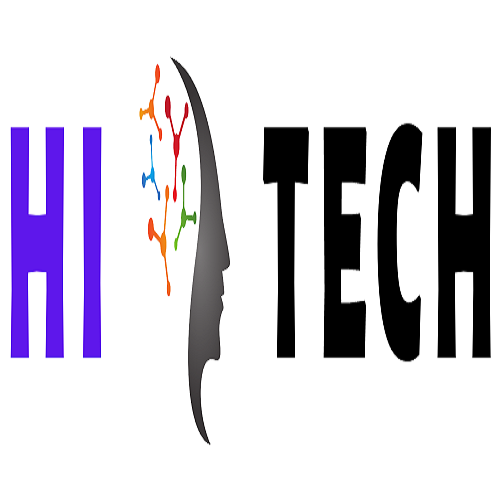ATM Technology:
The
Automated Teller Machine (ATM) has become an indispensable part of modern
banking, revolutionizing the way people access their money and manage their
finances. ATMs have evolved significantly since their inception in the 1960s,
and today's advanced ATM technology has transformed the banking landscape,
making banking more convenient, efficient, and accessible to millions of people
worldwide.
ATMs
are electronic devices that allow bank customers to perform a variety of
transactions without the need for human intervention. Originally designed to
dispense cash, modern ATMs are capable of performing a wide range of functions,
including cash withdrawals, deposits, fund transfers, balance inquiries, bill
payments, and even purchasing stamps or gift cards. With the advent of advanced
ATM technology, customers can now perform most banking transactions through
ATMs, eliminating the need to visit a physical bank branch for routine banking
tasks.
Advancements in ATM Technology:
One
of the most significant advancements in ATM technology is the ability to
perform cardless transactions. Traditional ATM transactions require a physical
bank card and a personal identification number (PIN) for authentication.
However, cardless ATMs use mobile banking apps or other forms of digital
authentication to verify the user's identity, allowing customers to perform
transactions using their smartphones or other mobile devices. This eliminates
the need to carry a physical card and provides added convenience and security.
The
advancements in ATM technology have also enhanced security measures to protect
against fraud and other security threats. From encryption to fraud detection
algorithms to biometric authentication and surveillance cameras, ATM operators
are continually investing in technologies to safeguard customer transactions
and data. However, it is crucial for users to remain vigilant and follow best
practices, such as protecting their PINs and being cautious of potential
skimming devices or other fraudulent activities at ATMs.
Biometric Authentication:
Biometric
authentication is another groundbreaking advancement in ATM technology.
Biometric ATMs use unique physical characteristics, such as fingerprint, iris,
or facial recognition, to authenticate users, providing a high level of security
and eliminating the need for physical cards or PINs. Biometric authentication
has made ATM transactions more secure, reducing the risk of card skimming or
PIN theft, and providing a seamless and convenient user experience.
Multilingual Interfaces:
ATMs
have also become more sophisticated in terms of their design and functionality.
Many ATMs now feature large touchscreens with intuitive user interfaces that
make it easy for customers to navigate through various options and perform
transactions. Some ATMs also offer multilingual interfaces, providing
accessibility to customers who may not be proficient in the local language.
ATMs are also equipped with features such as cash recycling, which allows
deposited cash to be used for withdrawals, reducing the need for frequent cash
replenishment and making ATMs more efficient and cost-effective.
Remote ATM Management:
Remote
ATM management is another significant advancement in ATM technology. Banks can
now remotely monitor and manage their ATM networks in real-time, reducing the
need for physical maintenance and troubleshooting. Remote management allows
banks to perform tasks such as software updates, transaction monitoring, and
cash management, improving the availability and performance of ATM networks.
ATMs
have become an integral part of modern banking, providing customers with the
convenience of accessing their money and performing various transactions at any
time, in any location. They have also expanded financial inclusion, allowing
customers in remote or underserved areas to access banking services. Moreover,
ATMs have reduced the need for physical bank branches for routine transactions,
making banking more efficient and cost-effective for both banks and customers.
Popularity of Independent:
In
addition to traditional bank-owned ATMs, there has been a rise in the
popularity of independent or white-label ATMs. These ATMs are not owned by
banks but are operated by third-party companies, providing access to cash in
locations where bank-owned ATMs may not be available. Independent ATMs often
offer additional services, such as surcharge-free withdrawals or specialized
transaction options, providing convenience to customers and generating revenue
for the operators.
Bitcoin ATMs:
ATM
technology has also evolved to cater to the growing demand for digital
currencies, such as Bitcoin. Bitcoin ATMs, also known as BTMs or crypto ATMs,
allow users to buy, sell, or exchange cryptocurrencies using cash or bank
cards. Bitcoin ATMs have gained popularity in recent years, providing a
convenient way for users to access the world of digital currencies.
Security:
Despite
the numerous advancements in ATM technology, security remains a top priority.
Banks and ATM operators employ various security measures, such as encryption,
fraud detection algorithms, surveillance cameras, and physical safeguards, to
protect against ATM-related fraud and other security threats. However,
criminals continue to innovate and develop new techniques to compromise ATM
security, posing ongoing challenges for the industry.
Future of ATM Technology:
As
technology continues to evolve, the future of ATM technology looks promising.
With the increasing adoption of digital currencies, we may see more integration
of cryptocurrency functionalities in ATMs. Additionally, the use of artificial
intelligence (AI) and machine learning algorithms may further enhance security
measures and improve the user experience at ATMs. The ongoing innovation in ATM
technology is likely to shape the future of banking and redefine the way
customers interact with their finances.
Conclusion:
In
conclusion, ATM technology has transformed banking convenience by providing
customers with accessible, efficient, and secure banking services. With
advancements such as cardless transactions, biometric authentication, intuitive
interfaces, remote management, and the rise of independent and Bitcoin ATMs,
ATM technology has come a long way since its inception. As technology continues
to evolve, we can expect further enhancements in ATM technology, which will
continue to revolutionize the banking landscape and cater to the changing needs
of consumers in the digital age.








0 Comments